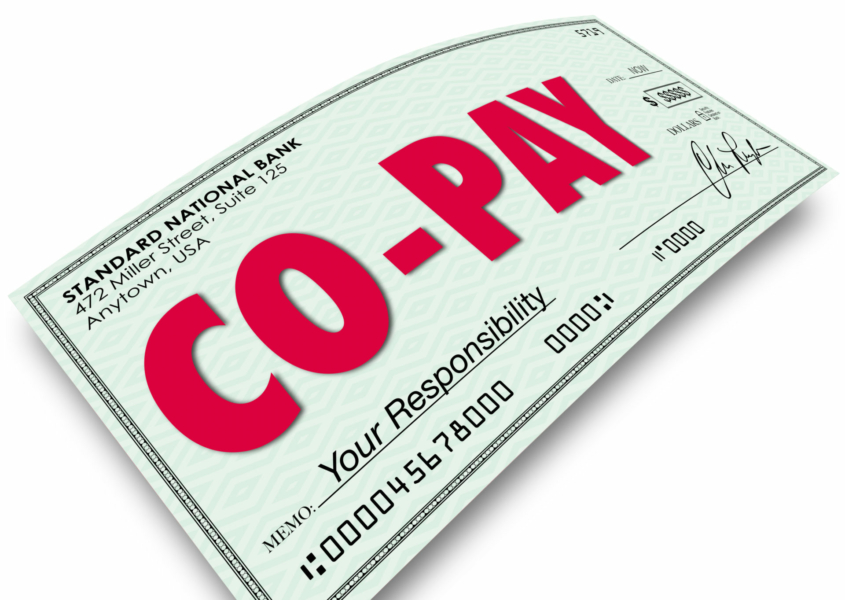Cost Sharing
A common term in healthcare is the term “cost sharing.” Cost sharing is when a patient is required to pay a portion of the healthcare costs not covered by insurance. There are different terms for cost sharing that you may be more familiar with. They include copays, deductibles, coinsurance and out of pocket maximums.
Copays
This is normally a set dollar amount for a specific service that the patient pays. The most common is an office visit. A copay is usually a portion of the contracted amount between the health care provider and the insurance company. Copays may also depend on the type of provider you are seeing as there may be different co-pays for a primary care and specialty provider. You may also find copays are required for obtaining prescription medications.
Deductibles
A deductible is an amount of money that a patient should pay before their insurance will cover for any expenses. Deductibles are typically a specific amount of money and are typically determined on both an individual and family (if applicable) basis as well as in-network and out-of-network services.
Coinsurance
Coinsurance amounts are typically a percentage of the allowable that a patient is required to pay once a deductible has been met. If a patient has met their deductible, then they may have a certain percentage of the charge that they are required to pay up to certain dollar limit before all the services will be covered in full. Most times, people may see coinsurance amounts of 10% to 30%. Coinsurance amounts may also change based on if the patient is seeing an in-network or out-of-network provider.
Out of Pocket Maximums
Out of pocket maximums is the total amount that a patient may have to pay in a benefit year under their plan. These include all of the copays, deductibles and coinsurance amounts paid within the year. If a person has ‘met’ their out-of-pocket maximum, the insurance company will pay 100% of the costs for the remainder of that benefit year. Out of pocket maximums will reset every new benefit year.
Be Informed
Next time you get an Explanation of Benefits from your insurance provider, check it out and make sure it’s right based on your benefits. Make sure you know how much you will be billed by your health care provider. Don’t wait for the statement to come from the health care provider and wonder if they are billing you correctly.





